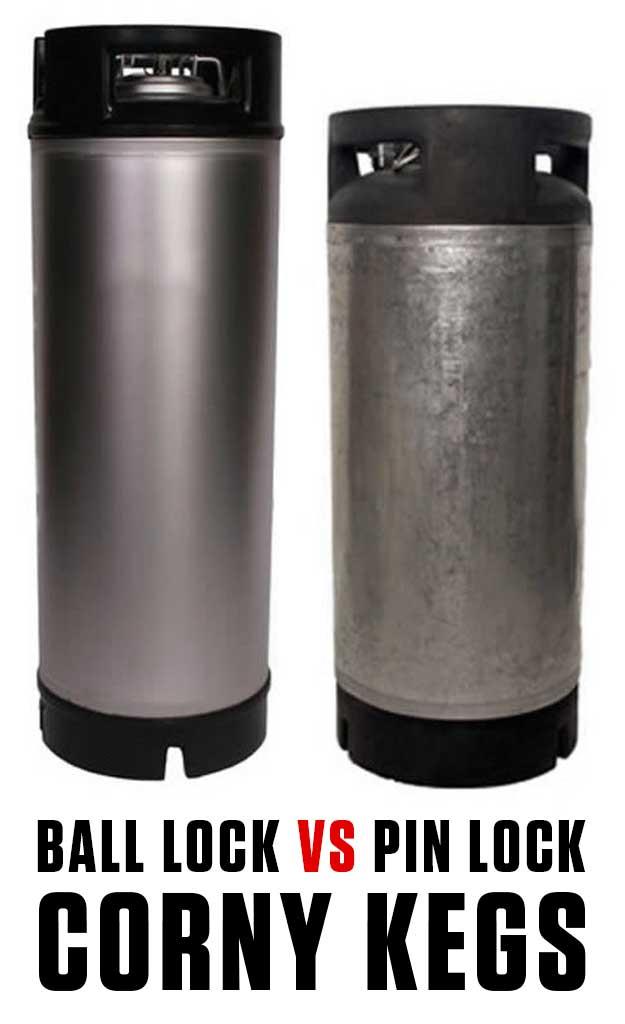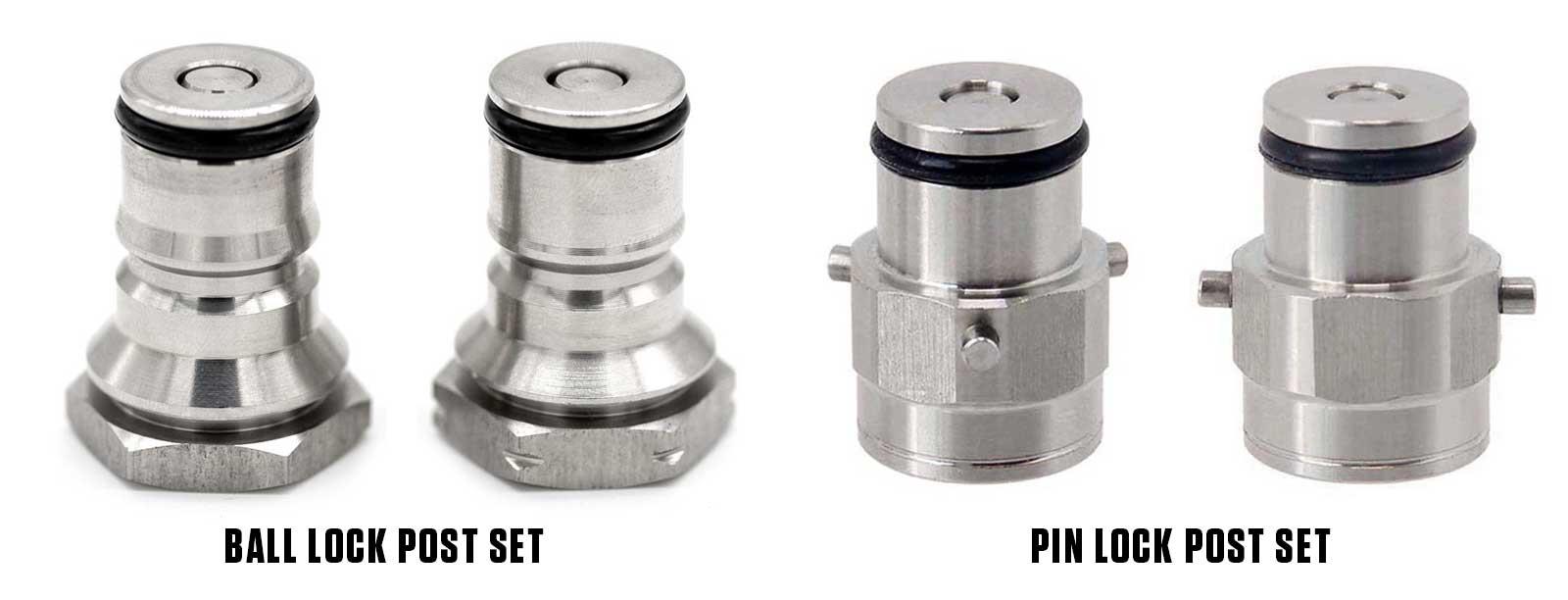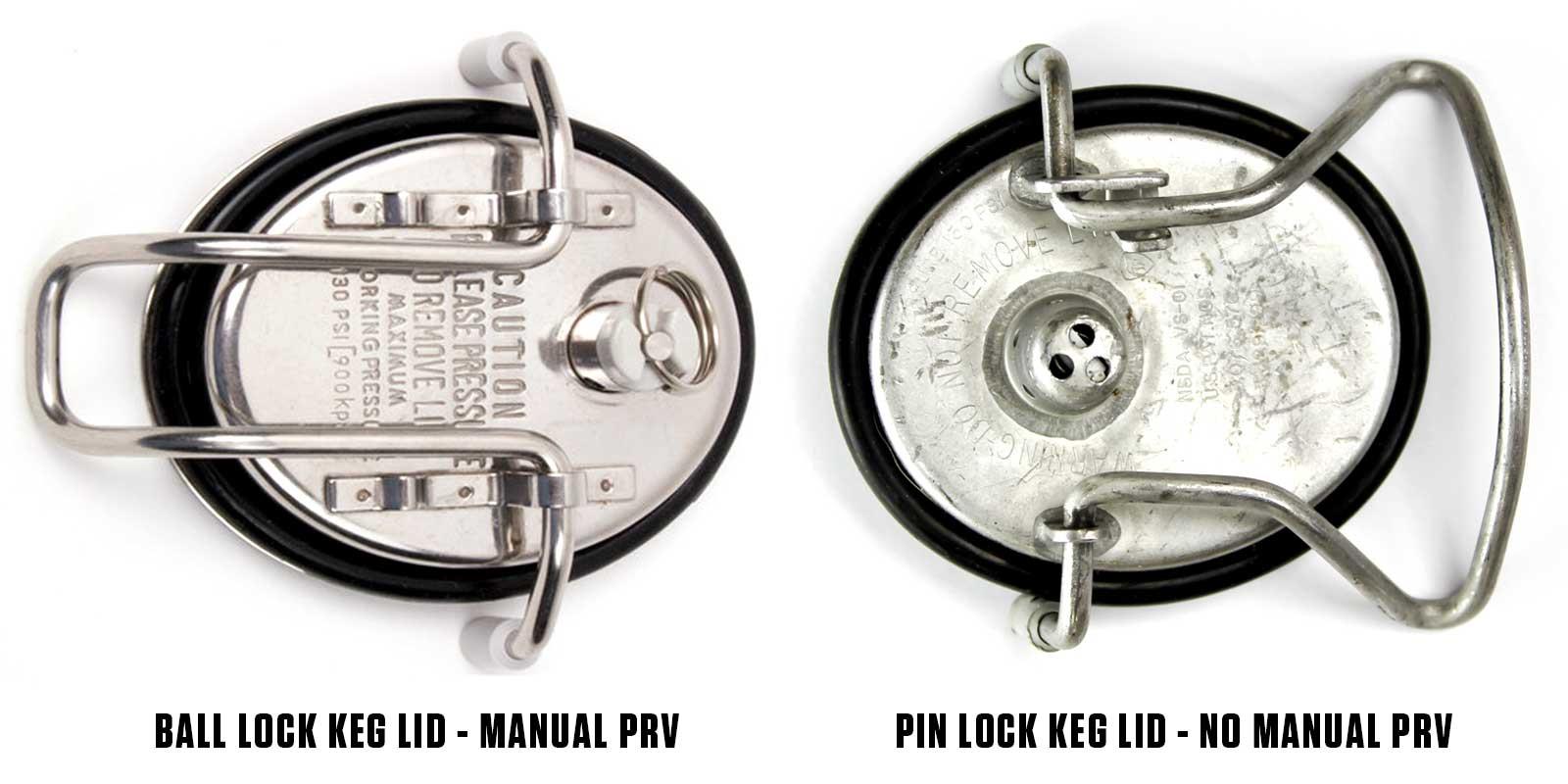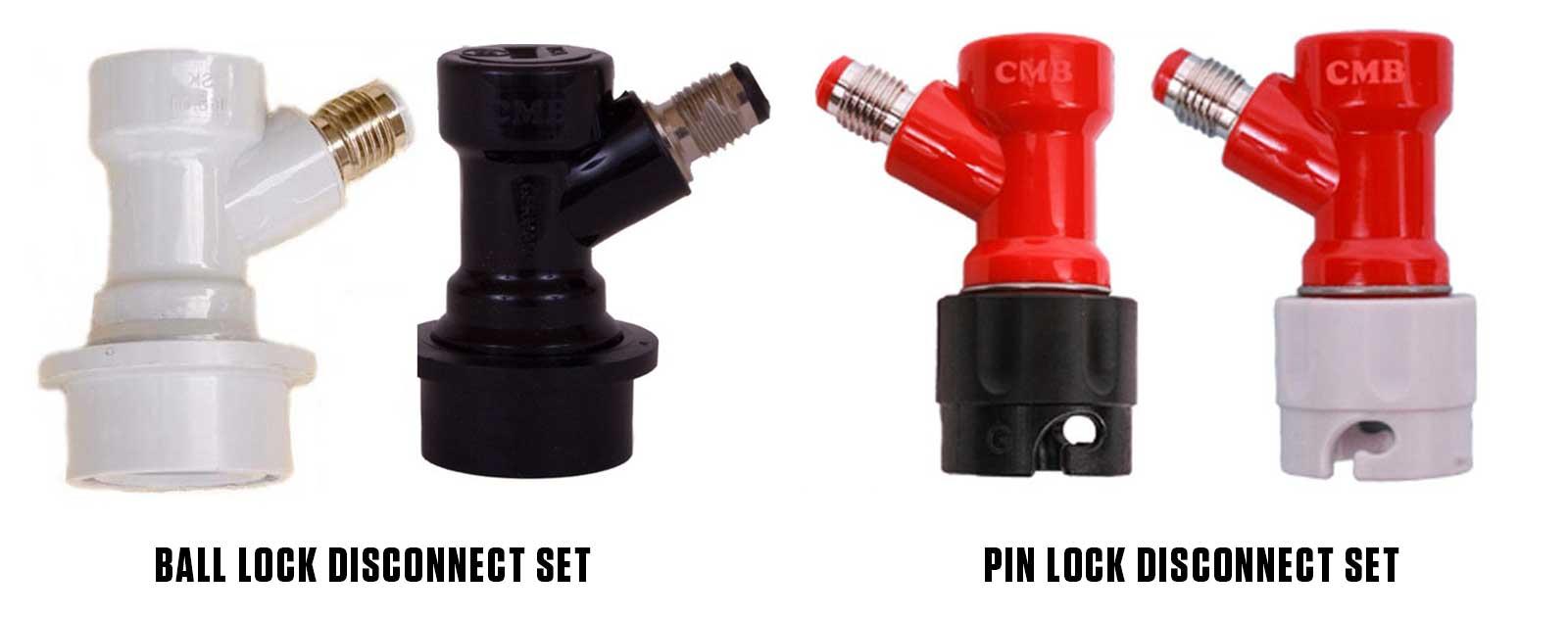 Ball-lock and pin-lock are two different styles of Cornelius (Corny) kegs, which are commonly used for homebrewing and dispensing beverages like beer, soda, coffee and more. These kegs have slight design variations that make them incompatible with each other, and each has its own set of pros and cons. Here are the main differences between ball lock and pin lock Cornelius kegs:
Ball-lock and pin-lock are two different styles of Cornelius (Corny) kegs, which are commonly used for homebrewing and dispensing beverages like beer, soda, coffee and more. These kegs have slight design variations that make them incompatible with each other, and each has its own set of pros and cons. Here are the main differences between ball lock and pin lock Cornelius kegs:
Connection Type:
Ball Lock: Ball lock kegs have a type of quick disconnect fitting that uses a small ball bearing (or "ball") inside the post to secure the gas and liquid connections. The gas side usually being a gray disconnect, while the liquid is generally a black disconnect.
Pin Lock: Pin lock kegs, on the other hand, use a system of pins to secure the gas and liquid connections. The gas side typically has a 2-pin disconnect, while the liquid side has a 3-pin disconnect.
If you look at the pin lock post you will see these pins stocking off the sides of them, and when compared to a ball lock style disconnect, they are smooth (without pins).

Size and Shape:
Ball Lock: Ball lock kegs are generally slightly taller and narrower than pin lock kegs.
Pin Lock: Pin lock kegs are typically shorter and wider than ball lock kegs. They have a more squat and round shape.
While this is generally true, there are many manufacturers of kegs, and many being decades old have been converted from one to another. So it's always a good idea to measure or know your space requirements prior to purchasing one or the other to ensure the keg will fit in your refrigerator.
LIds:
Ball Lock: Ball lock lids generally have a manual pressure relief valve with a ring attached to it, which makes it very easy to pull to release all the pressure from the keg.
Pin Lock: Pin Lock kegs generally do not have a manual PRV. They usually have a built-in block off PRV, that will release pressure if the pressure in the keg gets too high. So in order to release pressure manually from the keg, you will need to depress the gas in poppet/post on the keg. There is a tool used to help with this, or you can use a small screwdriver or other pointed tool to do this.

Availability:
Ball Lock: Ball lock kegs were more commonly used by the soda industry, so they tend to be more widely available and are often preferred by homebrewers for this reason.
Pin Lock: Pin lock kegs were less common in the soda industry, so they are generally less prevalent in the homebrewing community. Finding replacement parts and kegs may be a bit more challenging compared to ball lock kegs.
If you are deciding between these 2 kegs, we always recommend going with ball lock. The kegs may cost more than used pin lock kegs, but the disconnect system is much better, and long term you will not have any problems finding parts for them, as Ball lock kegs and parts are still readily manufactured, whereas pin lock kegs are no longer manufactured, but some parts are.
Disconnects:
Ball Lock: Ball lock disconnects are generally considered easier to use and maintain because they are more straightforward to connect and disconnect. You simply pull up on the outer lock right of the disconnect and press down over the keg post and it will lock on.
Pin Lock: Pin lock disconnects can be a bit more cumbersome to attach and remove, as you need to align the pins correctly, and twist to lock onto the pins of the post.

Interchangeability:
Ball Lock and Pin Lock kegs are not interchangeable due to the differences in their disconnect styles. If you have a set of ball lock kegs, you'll need ball lock disconnects, and vice versa. However, some ball lock and pin lock kegs use the same size threading under the posts, so you can install ball lock posts on a pin lock keg or vice versa to convert it. Before doing this though you need to make sure the manufacturer of the keg you have and ensure the threading size is compatible. You can look up your keg's thread size on our Cornelius Keg Post Thread Size Chart.
In summary, the main differences between ball lock and pin lock Cornelius kegs are the type of disconnects they use, their size and shape, availability, ease of use, and interchangeability. Your choice between the two styles may depend on personal preference, availability of kegs and parts in your area, and whether you're more comfortable with one style of disconnect over the other. You can purchase both used ball lock and pin lock kegs still, but if you are in the market for brand new kegs, you will only be able to find new ball lock kegs.